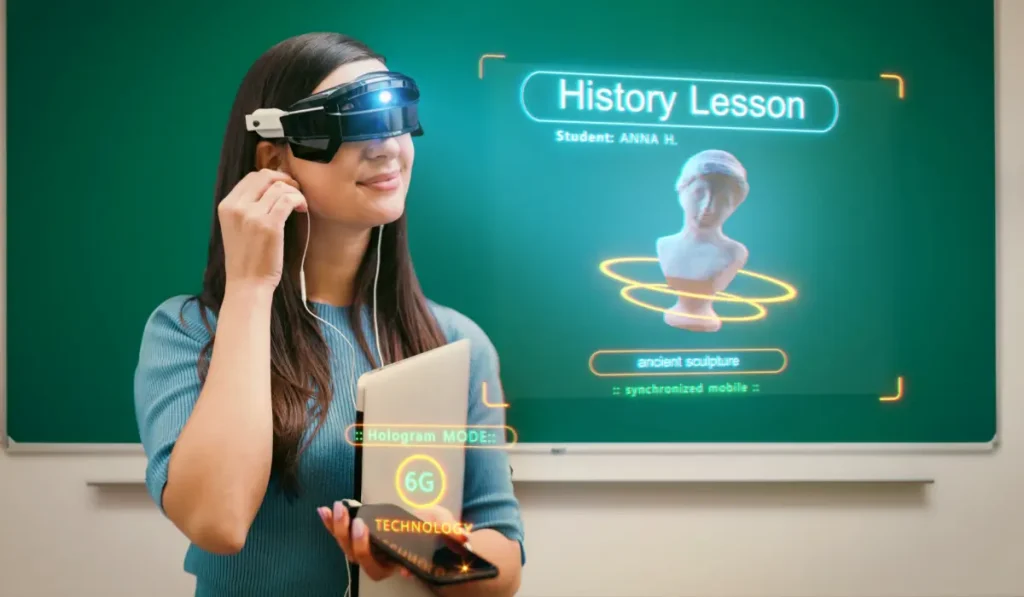Artificial Intelligence is changing the role of technology in education sector. From using technology to make learning accessible and affordable to everyone, the focus has now shift to make education more personalized and immersive. Schools and universities are using AI in education in multiple ways to help students learn and understand things better with no boundaries of place, time, culture, and language.
The Current Role of AI in Education Industry
Methods of teaching and learning evolve constantly with the time and introduction of new technologies. In case of AI, these methodologies have evolved to an extent that students can learn and progress at their own pace without much supervision. Whereas teachers can analyze the strengths and weaknesses of each student in less time and modify their course and methods accordingly.
There are other ways as well how AI is changing the education industry:
1. Making Learning Personalized
Learning is and never was generalized. Every student has its own capacity to absorb and understand the concepts. It is difficult for teachers to evaluate each student’s strength and weakness especially for a class of large size.
AI’ capabilities to analyze patterns and data helps teachers in identifying those areas and make learning more personalized experience for students. That is just one role of AI in education. The technology also helps in recommending personalized content to improve their learning outcomes.
2. Helping in Adaptive Learning
Not everyone learns the same way. Some grasp information efficiently through images, while others learn better through audio. Adaptive learning tools and intelligent tutoring systems understand the students’ preferred learning style and present learning materials in that format.
It also adjusts the difficulty levels based on their performance and feedback. This type of learning ensures that students learn at their own pace and grasp concepts effectively.
3. Creating Smart Educational Content
One of the biggest challenges teachers often face is presenting the difficult concepts in fun and easy way. By using AI, they can create interactive educational content breaking it down in simple stories or videos in different languages. This type of content is easy to grasp and make learning more engaging.
4. Increasing Students Engagement
Teachers cannot be available 24×7 but AI chatbots can. These smart virtual assistants can solve students’ queries or provide guidance in the absence of teachers. Students can ask them anything without any hesitation and get answers in language they are comfortable with. This use of AI in education increases engagement of the students within and outside the classroom.
5. Assisting in Administrative Tasks
Not only students, but teachers and administrative staff are also getting great help from AI. Admission tasks, grading, attendance tracking, resource allocation, budget management, and class scheduling are a few areas where AI is helping. They used to spend more than half of their time on these simple yet time-consuming tasks. AI has cut this time by 20 percent giving them enough time to focus on things that matter.
6. Making Education Accessible to All
One of the biggest benefits of AI in education is for the students with varied disabilities. AI tutors, virtual reality, and AI tools bridge learning gaps between these students. For example, AI tools can convert texts into audio for visually impaired students. Speech recognition tools help deaf students by transcribing the on-going or recorded lectures and discussions.
Read More: Generative AI Vs Predictive AI: Know The Fundamental Difference Between The Two
3 Real Examples of AI in Education
1. Duolingo
Duolingo is an adaptive AI language learning tool with more than 40 languages and different difficulty levels. It trains users through bite-sized sessions, exercises, and quizzes for easy and quick practice.
The app’s AI model called Birdbrain create exercises according to their difficulty levels. Previously, a human expert used to write, review, edit, and translate these exercises to maximize its learning value.
2. DreamBox
DreamBox is a tool that makes math easier for kids in kindergarten through middle school. It uses AI to help them understand math better. It gives instant reports, suggests lessons based on how they learn, tracks their goals, and uses fun avatars.
3. MATHia
MATHia is a smart math learning software developed by Carnegie Learning, a top AI education company in the US. It uses AI and cognitive science to teach mathematics to K-12 students. Unlike other programs, MATHia acts like a personal coach, understanding how students think and learn. It gives instant feedback and hints to help them improve. MATHia was a finalist for Best AI solutions in the 2024 EdTech Awards.
Conclusion
Every student deserves an education, but the growing competition demands quick learning. In this fast pace, weak and disabled students are left behind. By using AI in education, teachers can help every student learn and grow at their own pace. They can make learning more interesting and engaging without overburdening the students.



